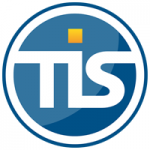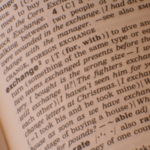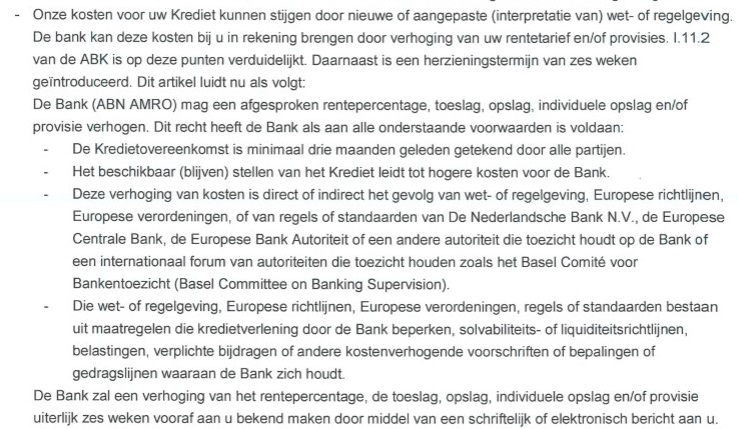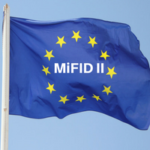Unilever’s decision – the Ides of March?
| 22-03-2018 | treasuryXL |
 On 15th March 2018, Unilever announced its decision to domicile its headquarters exclusively in the Netherlands. This will lead to Unilever having a single legal base for the first time. Traditionally, Unilever had 2 holding companies – Unilever NV, registered and domiciled in Rotterdam the Netherlands, and Unilever PLC, registered and domiciled in Port Sunlight, England. There were 2 head offices – one in Rotterdam and the other in London. Unilever was formed in 1930 by the merger between Margarine Unie and Lever Brothers and has a dual listing in both the AEX and the FTSE index. The 2 companies operate as a single business. What are the reasons behind this decision and what are the consequences?
On 15th March 2018, Unilever announced its decision to domicile its headquarters exclusively in the Netherlands. This will lead to Unilever having a single legal base for the first time. Traditionally, Unilever had 2 holding companies – Unilever NV, registered and domiciled in Rotterdam the Netherlands, and Unilever PLC, registered and domiciled in Port Sunlight, England. There were 2 head offices – one in Rotterdam and the other in London. Unilever was formed in 1930 by the merger between Margarine Unie and Lever Brothers and has a dual listing in both the AEX and the FTSE index. The 2 companies operate as a single business. What are the reasons behind this decision and what are the consequences?
Framework
Whilst having a dual listing, 55% of the stock are held via the Dutch NV and 45% by the UK PLC. Liquidity in share trading is 1.5 times higher in the Netherlands than in the UK. After this decision, Unilever will have 3 divisions – food and refreshment based in the Netherlands, home care and personal care which are both based in the UK. Under this split, 49% of operating profit is attributed to operations in the Netherlands, the remaining 51% to the UK. Importantly, 92% of the activities occur worldwide outside of these 2 countries.
Nationality
Unilever has one major issue that must be resolved – it must choose its nationality. This is important in determining on what exchanges its shares are traded. As a major constituent of both the AEX and the FTSE, there are many investors and investment funds who hold shares to track the index. If there is no recognised nationality with the UK, this would imply Unilever leaving the FTSE 100 – compelling tracker funds to sell their stock. By incorporating within the Netherlands, Unilever will have one type of share – common shares with common voting rights. There will be no preference shares with extra voting rights.
Brexit
Was the decision taken because of Brexit? Unilever themselves have stated that this was not the case. It is acceptable to conclude that the free choice of the UK to leave the EU did not promote the option to stay in the UK. However, Relx (former Reed Elsevier and also a dual listed Anglo-Dutch company) recently announced that they had also chosen a single location – but they chose UK over the Netherlands.
Defensive
In 2017 Kraft Heinz (a US conglomerate) made a hostile takeover bid for Unilever. This was beaten, but accelerated the decision process within Unilever. By choosing a single listing and single nationality it would appear to be easier to defend the company. The Dutch model affords more protection to the takeover target, being based on the Rhineland model of stakeholders, rather than the Anglo-Saxon model based on shareholders.
The future
Unilever will gain clarity of oversight – the structure of the company is clearer. As a single legal entity it will be easier to issues new shares etc. It should also place Unilever in a more progressive position with regards to acquisitions. This could be interesting news for Dutch banks – allowing them to more directly participate. However, the City of London is still home to the largest financial market in Europe. It will be interesting to see who wins that battle in the future.
The 15th March is historically known as the Ides of March – a day on the Roman calendar. Traditionally it was the date when debts had to be settled. It was also the date when the emperor, Julius Caesar, was assassinated – a defining day in the history of the Roman Empire, that impacted on its future.

 Met het huidige nieuws rond beursgangen (IPOs = initial public offering) heb ik gezocht op het steekwoord beursgang op treasuryXL en vond geen resultaten. Wellicht omdat de treasury beroepsgroep communiceert in het Engels. Voor Non-Treasurers ga ik bij deze kort in op de basisbeginselen van een beursgang en waarom hier zoveel aandacht voor bestaat.
Met het huidige nieuws rond beursgangen (IPOs = initial public offering) heb ik gezocht op het steekwoord beursgang op treasuryXL en vond geen resultaten. Wellicht omdat de treasury beroepsgroep communiceert in het Engels. Voor Non-Treasurers ga ik bij deze kort in op de basisbeginselen van een beursgang en waarom hier zoveel aandacht voor bestaat.

 Treasury Intelligence Solutions GmbH (TIS)- a partner of treasuryXL, are organising a very engaging event that is being held in Amsterdam on Tuesday 27th March 2018, for corporate treasury. We have been kindly invited to attend and shall report back to you later, with our thoughts and experiences on what promises to be an interest evening. Read on for more information about this event and sign up if you find this event relevant to you and your company.
Treasury Intelligence Solutions GmbH (TIS)- a partner of treasuryXL, are organising a very engaging event that is being held in Amsterdam on Tuesday 27th March 2018, for corporate treasury. We have been kindly invited to attend and shall report back to you later, with our thoughts and experiences on what promises to be an interest evening. Read on for more information about this event and sign up if you find this event relevant to you and your company. On Tuesday 13th March 2018, RTL Z – a television channel – broadcast a “Cryptoshow” to explain how the Blockchain works and what it could mean for the future. They attempted to make the technology and information as simple as possible to show what uses the Blockchain could have in the world for consumers and businesses. One of the main areas of interest relates to Smart contracts. What are they? What are the advantages and disadvantages? What changes can they bring?
On Tuesday 13th March 2018, RTL Z – a television channel – broadcast a “Cryptoshow” to explain how the Blockchain works and what it could mean for the future. They attempted to make the technology and information as simple as possible to show what uses the Blockchain could have in the world for consumers and businesses. One of the main areas of interest relates to Smart contracts. What are they? What are the advantages and disadvantages? What changes can they bring? Whenever entering into transactions with banks, both parties need to know and understand what they are trading. A relatively simple transaction like a FX spot has few terms – you buy one currency against selling another currency at an agreed rate and an agreed settlement date. The only other major factor relates to where the settlement has to take place – on what bank account are you receiving and to what bank account do you have to pay the counter currency.
Whenever entering into transactions with banks, both parties need to know and understand what they are trading. A relatively simple transaction like a FX spot has few terms – you buy one currency against selling another currency at an agreed rate and an agreed settlement date. The only other major factor relates to where the settlement has to take place – on what bank account are you receiving and to what bank account do you have to pay the counter currency. 


 In the last week, 3 Dutch companies have announced that they will be floating on the stock exchange via Initial Public Offerings (IPOs). Alfen – an energy storage company; B & S – a cosmetics wholesaler; and NIBC – fifth largest Dutch bank in terms of assets. In America, Dropbox and Spotify, among others, are looking to float. Future issues in the Netherlands are expected to include Leaseplan, Varo Energy and Ayden. It is a very busy start to the year for investment banks with plenty of activity in IPOs and mergers and acquisitions (M&A). Here is a summary of how an IPO works.
In the last week, 3 Dutch companies have announced that they will be floating on the stock exchange via Initial Public Offerings (IPOs). Alfen – an energy storage company; B & S – a cosmetics wholesaler; and NIBC – fifth largest Dutch bank in terms of assets. In America, Dropbox and Spotify, among others, are looking to float. Future issues in the Netherlands are expected to include Leaseplan, Varo Energy and Ayden. It is a very busy start to the year for investment banks with plenty of activity in IPOs and mergers and acquisitions (M&A). Here is a summary of how an IPO works.


 Corporate governance is the rules and processes by which a company is controlled and directed. It is a balancing mechanism between different stakeholders – directors, shareholders, management, government, external financiers etc. The treasury function performs highly skilled and complex tasks to ensure continued and harmonious execution of all cash related functions. At the same time, there is much interaction with both internal and external stakeholders. The corporate governance within the treasury function should always be performed in accordance with predetermined and approved metrics as laid out in Treasury statutes. This means undertaking operations that are consistent with the governance within the corporation.
Corporate governance is the rules and processes by which a company is controlled and directed. It is a balancing mechanism between different stakeholders – directors, shareholders, management, government, external financiers etc. The treasury function performs highly skilled and complex tasks to ensure continued and harmonious execution of all cash related functions. At the same time, there is much interaction with both internal and external stakeholders. The corporate governance within the treasury function should always be performed in accordance with predetermined and approved metrics as laid out in Treasury statutes. This means undertaking operations that are consistent with the governance within the corporation.
